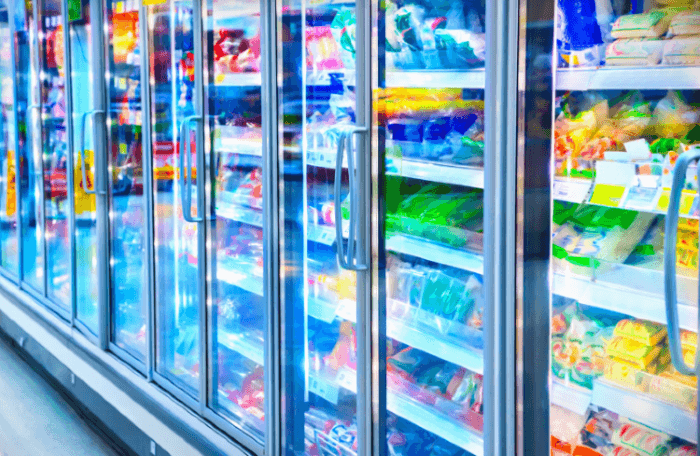Consumers want more fresh foods and other temperature-sensitive products than ever before, and the shift in demand is altering approaches to cold chain distribution. In response to high demand for fresh grocery delivery, meal kits, temperature-sensitive pharmaceuticals, and other perishables with short shelf lives, shippers with temperature-controlled supply chains must react in ways that challenge traditional distribution models. The major trends that follow are giving shippers a bounty of food for thought.
Trend 1: Demand for Cold Storage on the Rise
The “driver shortage” gets a lot of attention within our industry, but another (often overlooked) shortage is threatening the cold chain specifically—the lack of available cold storage facilities. The refrigerated storage sector is on track to grow 3.4 percent annually between 2014 and 2019; yet, the number of cold storage facilities across the U.S. will only grow 1 percent annually for the next five years (Food Logistics).
What’s causing this gap between supply and demand? Grocery retailers are adjusting how and what they order to meet consumer preferences for convenience, variety, and healthier fresh and frozen options. The entry of large e-commerce players into the grocery and food distribution space has also made an impact. It’s estimated that 70 percent of consumers will shop for groceries online in the next five to seven years. Lack of infrastructure necessary to accommodate these shifts will likely create challenges for the industry in the coming years.
Trend 2: More Fresh, Less Frozen
Today’s busy, health-conscious consumers increasingly shop the perimeters of grocery stores, where fresh refrigerated foods reside. In fact, since 2012, product segments such as produce, eggs, refrigerated meat and poultry, and freshly prepared foods have grown quickly while traditional frozen segments—once a mainstay of grocery stores—have remained flat (Winsight).
For many items, including cut fruit and foodservice items like freshly made pizza, greatly reduced shelf life creates challenges for shippers:
- Fine-Tuned Delivery Windows. Retailers now require more frequent deliveries with tight windows to keep up the steady flow of fresh foods.
- Customized Pallets. Instead of full pallets of a single product, grocery stores want mixed pallet loads, which demand precise logistical execution. Differing temperature and handling considerations, ethylene and CO2 off-gas, ripening times, transit times, delays, and cross-contamination concerns add to the complexity.
- Cold-Savvy Carriers. Shippers need more carriers with food safety, temperature control, and precise scheduling experience, as well as the flexibility to adapt to ever-changing processes.
- Temperature-Control Technologies. Supply chains need more and better truck refrigeration, GPS tracking, RFID and remote monitoring, geofencing, thermal mapping, and other updates to maintain product freshness and visibility across the cold chain.
Trend 3: Pharmaceuticals
 Temperature-sensitive pharmaceuticals are a $283 billion market, which continues to outpace the overall pharmaceuticals market at twice the rate. In 2017 alone, half the new drugs approved by the FDA were temperature-sensitive, requiring refrigeration or cryogenic storage and transportation. And, that growth shows no signs of slowing. By 2021, demand for temperature-sensitive pharmaceuticals will increase by 70 percent. While growth is good for shippers, the increased competition for temperature-control equipment and insulated or refrigerated containers has made sourcing a challenge in an already risky space. Pharmaceuticals are often a target for their high value and they’re easily damaged in transit, making it difficult to find temperature-controlled carriers willing and qualified to transport them (P&T Community).
Temperature-sensitive pharmaceuticals are a $283 billion market, which continues to outpace the overall pharmaceuticals market at twice the rate. In 2017 alone, half the new drugs approved by the FDA were temperature-sensitive, requiring refrigeration or cryogenic storage and transportation. And, that growth shows no signs of slowing. By 2021, demand for temperature-sensitive pharmaceuticals will increase by 70 percent. While growth is good for shippers, the increased competition for temperature-control equipment and insulated or refrigerated containers has made sourcing a challenge in an already risky space. Pharmaceuticals are often a target for their high value and they’re easily damaged in transit, making it difficult to find temperature-controlled carriers willing and qualified to transport them (P&T Community).
Trend 4: Amazon Fresh and Meal Kits
Last year, Amazon Fresh grossed $350 million in online sales and deliveries of fresh meat, seafood, produce, and other staples. Sales of subscription-based, home-delivered meal kits have also grown in recent years to a whopping $2.2 billion. Not to be left behind, traditional grocers have begun offering their own meal kits in stores and online. Collectively, this trend creates a need for new retail and industrial cold storage space, roughly 35 million square feet, to meet demand for fresh food distribution (Phoenix Business Journal).
Capstone and Your Cold Chain
Efficient supply chains can give companies a leg up in the marketplace, especially in emerging, high-growth markets where the competition is not just fresh—it’s fast and fierce. Working with Capstone to streamline your cold chain accelerates progress with:
- Assistance meeting retail compliance requirements
- Technology for real-time tracking and business intelligence
- Programs for mode optimization and consolidation
- Scalable capacity in when the market gets tight

